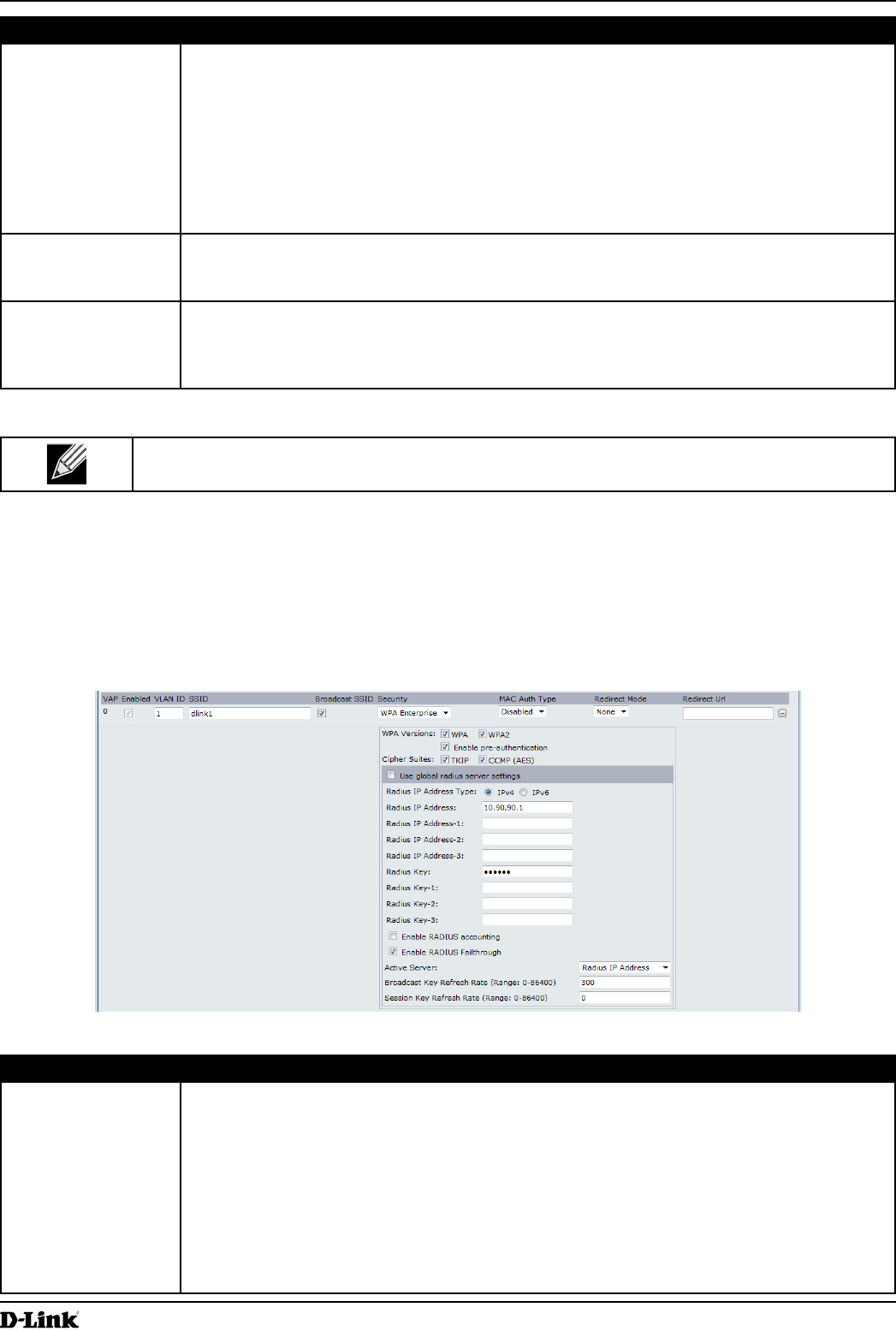
Unied Access Point Administrator’s Guide
Unied Access Point Administrator’s Guide
Page 54
March 2012
Section 4 - Managing the Access Point
Field Description
Cipher Suites Select the cipher suite you want to use:
•) TKIP
•) CCMP (AES)
•) TKIP and CCMP (AES)
Both TKIP and AES clients can associate with the AP. WPA clients must have one of the
following to be able to associate with the AP:
•) A valid TKIP key
•) A valid AES-CCMP key
Clients not congured to use a WPA Personal will not be able to associate with the AP.
Key The Pre-shared Key is the shared secret key for WPA Personal. Enter a string of at least 8
characters to a maximum of 63 characters. Acceptable characters include upper and lower
case alphabetic letters, the numeric digits, and special symbols such as @ and #.
Broadcast Key
Refresh Rate
Enter a value to set the interval at which the broadcast (group) key is refreshed for clients
associated to this VAP (the default is 300).
The valid range is 0–86400 seconds. A value of 0 indicates that the broadcast key is not
refreshed.
Table 25 - WPA Personal
Note: After you congure the security settings, you must click Apply to apply the changes and to
save the settings.
WPA Enterprise
WPA Enterprise with RADIUS is an implementation of the Wi-Fi Alliance IEEE 802.11i standard, which includes CCMP
(AES), and TKIP mechanisms. The Enterprise mode requires the use of a RADIUS server to authenticate users.
This security mode is backwards-compatible with wireless clients that support the original WPA.
Figure 26 - Modify Virtual Access Point Settings (WPA Enterprise)
Field Description
WPA Versions Select the types of client stations you want to support:
•) WPA. If all client stations on the network support the original WPA but none support the
newer WPA2, then select WPA.
•) WPA2. If all client stations on the network support WPA2, we suggest using WPA2
which provides the best security per the IEEE 802.11i standard.
•) WPA and WPA2. If you have a mix of clients, some of which support WPA2 and others
which support only the original WPA, select both WPA and WPA2. This lets both WPA
and WPA2 client stations associate and authenticate, but uses the more robust WPA2
for clients who support it. This WPA conguration allows more interoperability, at the
expense of some security.


















